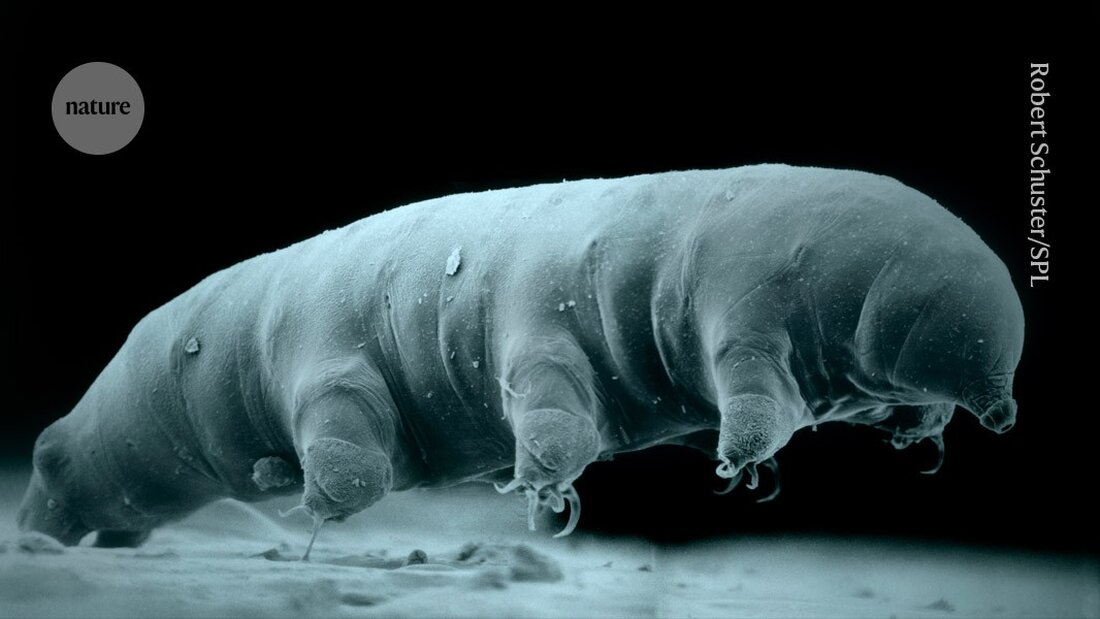New tardigrade species reveals secrets of radiation resistance
A newly discovered tardigrade species reveals how these tiny creatures can survive extreme radiation.

New tardigrade species reveals secrets of radiation resistance
A newly described species of tardigrade is giving scientists insight into what makes these tiny, eight-legged creatures so resilient to radiation.
Tardigrades, also known as water bears, have long fascinated scientists with their ability to survive extreme conditions, including radiation at levels nearly 1,000 times higher than the lethal dose for humans. There are about 1,500 known species of tardigrade, but only a handful are well-studied.
Now scientists have sequenced the genome of a scientifically new species and revealed some of the molecular mechanisms that give tardigrades their extraordinary resilience. Their study, published in Science on October 24th 1, identifies thousands of tardigrade genes that become more active when exposed to radiation. These processes suggest a sophisticated defense system that protects DNA from the damage that radiation causes and repairs breaks that do occur.
The authors hope their findings can be used to protect astronauts from radiation during space missions, clean up nuclear contamination or improve cancer treatment.
“This discovery could help improve the stress resistance of human cells, which will benefit patients undergoing radiation therapy,” says Lingqiang Zhang, co-author of the study and a molecular and cellular biologist at the Beijing Institute of Lifeomics.
Protective genes
About six years ago, Zhang and his colleagues went to the Funiu Mountains in China's Henan Province to collect moss samples. In the lab and under the microscope, they identified a previously undocumented species of tardigrade, which they named Hypsibius henanensis. Genome sequencing showed the species had 14,701 genes, 30% of which were unique to tardigrades.
When the researchers exposed H. henanensis to radiation doses of 200 and 2,000 gray - far beyond what humans could survive - they found that 2,801 genes involved in DNA repair, cell division and immune responses became active.
"It's like in wartime when factories are retooled to only produce munitions. It's almost at the level where gene expression is reengineered," says Bob Goldstein, a cell biologist at the University of North Carolina at Chapel Hill who has studied tardigrades for 25 years. “We are fascinated by how an organism can change its gene expression to produce so many transcripts for certain genes.”
One of the genes, called TRID1, encodes a protein that helps repair double-strand breaks in DNA by recruiting specialized proteins to the sites of damage. “This is a new gene that, as far as I know, no one has studied,” says Goldstein.
The researchers also estimate that 0.5-3.1% of tardigrade genes were acquired from other organisms through a process called horizontal gene transfer. A gene called DODA1, which appears to come from bacteria, allows tardigrades to produce four types of antioxidant pigments known as betalains. These pigments can neutralize some of the harmful reactive chemicals that radiation causes in cells, which account for 60-70% of the harmful effects of radiation.
The authors treated human cells with one of the tardigrade betalains and found that these cells were much better able to survive radiation than untreated cells.
No expiration date
Investigating the molecular mechanisms that enable tardigrades to tolerate other extreme conditions such as high temperatures, air deprivation, dehydration and starvation could have far-reaching applications. For example, it could improve the shelf life of sensitive substances such as vaccines. “All of your medications have an expiration date — tardigrades don’t,” says Goldstein.
Comparing these mechanisms between different tardigrade species is an important part of this research, adds Nadja Møbjerg, animal physiologist at the University of Copenhagen. “We don’t yet have enough knowledge about the different species of tardigrades that exist,” she says.
These animals have “a wealth of protective compounds that will likely provide even more interesting and useful insights,” Goldstein says. “We want to understand how they work and what potential they have.”
-
Li. L. et al. Science 386, eadl0799 (2024).

 Suche
Suche
